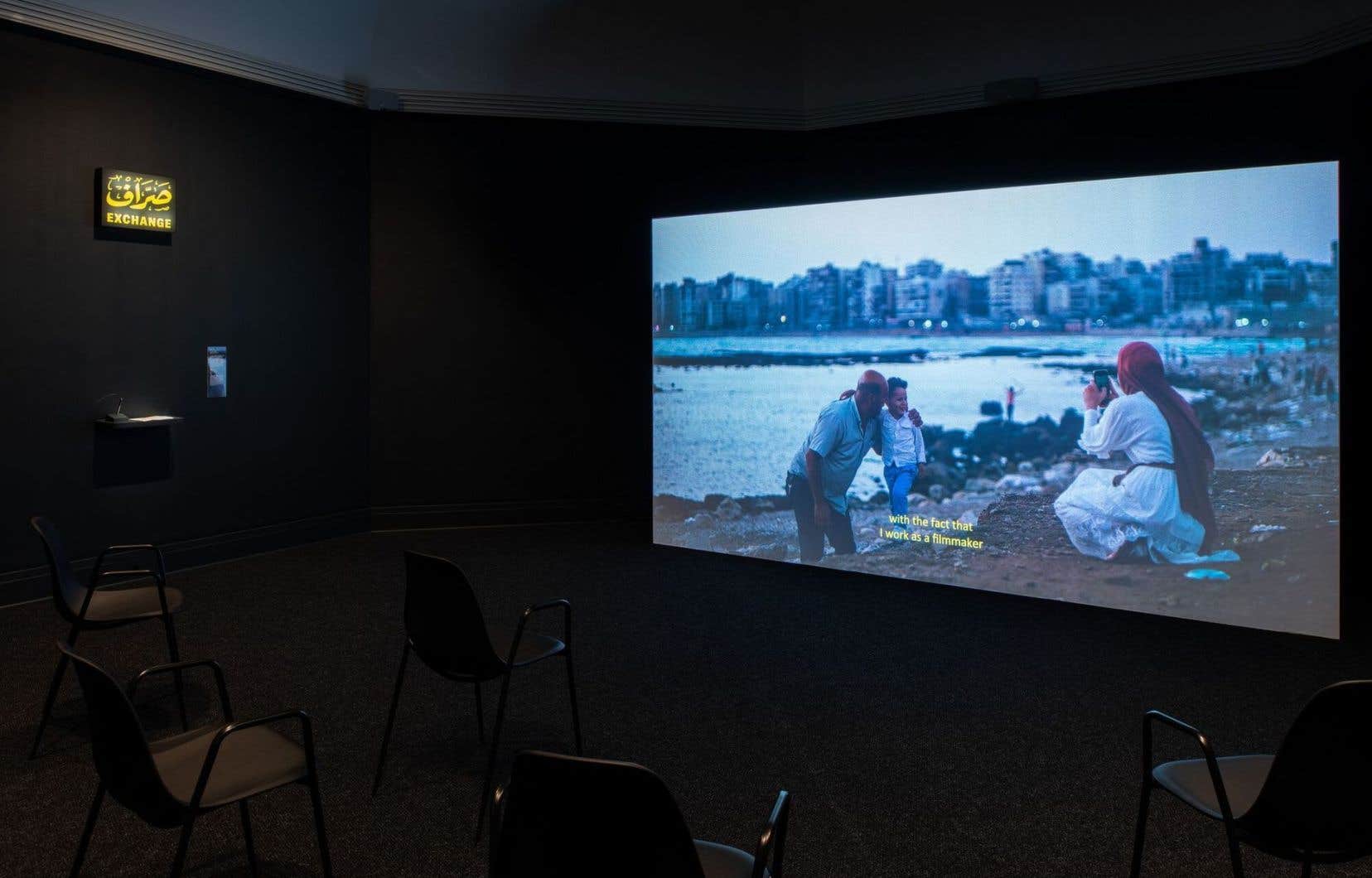To understand how local artists shape the material to extract their vision of the world, you have to meet them. Spotlight is a series of portraits that appears every end of the month. Forays into the world of creators who work on their works in unusual ways, away from current cultural events.
The appointment with Joyce Joumaa was made on a Thursday afternoon at the end of March at the Bruno Sport Bar, in Montreal’s Little Italy, where she discreetly seems to have her habits, as evidenced by her subtle smiles given to the staff. . If, a few days later, the Montreal artist and filmmaker flew to Venice to present her latest installation, Memory Contours, as part of the prestigious contemporary art biennial, she remains imperturbable and generous with her time and her words.
The fact that Joyce Joumaa is participating, at just 26 years old, in the Italian event, and moreover in the central pavilion, the Giardini, is an achievement. But the artist is convinced that the essential thing is not there. “ Memory Contours is my first work that has no link with Lebanon,” says Joyce Joumaa, in reference to her native country. In the continuity of her work all the same, the video and sound installation (for which, she insists, she received help from her precious collaborators, William Albu, Louis Parent and Sébastien Dallaire, as well as from Jakob Lorenz, from studio Générique Design) evokes themes that are close to his heart: political tensions in architectural spaces. “I’m always trying to understand how the infrastructure and structures of the past play an important role in the present moment. » In fact, it is a way for her to explore the ramifications of colonialism in today’s society.
For Memory Contours, Joyce Joumaa thus stepped out of her comfort zone by looking at an exam that immigrants had to take by drawing geometric shapes upon their arrival at Ellis Island, in New York Harbor, to measure their intelligence and cognitive abilities. “There is so much violence in these drawings. If you failed, you could be refused access to the country,” she points out. By not talking about his land of origin for the biennial, which this year has the theme Foreigners Everywhere, the Montrealer therefore takes risks. “As an artist, it’s a kind of protection to say to yourself that you’re working on what you know best, Lebanon in my case,” she emphasizes.
Lebanon, the Levant
What interests him with Lebanon is the state of the crisis into which the country has continued to sink since 2019, confides Joyce Joumaa. “My work is political without me really wanting it directly, but it’s part of my experience,” explains the artist. She grew up and resided in Tripoli until she was 18, but did not come into contact with contemporary art until later. “There were no cultural institutions in Tripoli, not even a gallery. When I was old enough, I started taking the bus to go to Beirut, where everything is centralized,” she adds. It was at this time that she discovered and then rubbed shoulders with the works of those who would become her peers. “My practice found its way under the influence of post-civil war Lebanese artists that I saw in Beirut,” she emphasizes, although she did not experience this conflict. And to continue, immediately: “But I still experienced the war between Israel and Lebanon in 2006.”
When she speaks about Lebanon and the region that encompasses it, the Levant (Palestine, Jordan, Syria and Israel), Joyce Joumaa nevertheless regrets a certain disconnection from the Montreal public. “It’s not a problem, just a fact,” she warns first. Sometimes I wonder if my work is understood to its full potential here. » The artist thinks in particular of his sculpture Hallab Bldg, recently unveiled at the inauguration of the Eli Kerr gallery, which represents her. “I am in no way underestimating the intelligence of the public, I am just saying that when we are detached, geographically distant from these speeches, the public is not sufficiently trained to understand these subjects,” she says.
The artist also deplores the fact that trends in contemporary Quebec art are not really focused on the political aspect of the Levant. “Especially right now!” » Personally, she admits to being disappointed by the way in which the Montreal arts community almost ignores the Palestinian question. “It seems like most people just aren’t concerned. There is a lack of interest. I don’t understand,” she observes. Joyce Joumaa believes that distance is responsible for this lethargy. “I realized that because we are not exposed to this part of the world here, some people can be detached from what is happening there and from the whole concept of war in general. » Unless you’re at Pizza Bouquet or the Drawn & Quarterly bookstore, she says, it’s almost impossible to overhear this kind of conversation in public places.
According to Joyce Joumaa, the explanation also comes, in part, from the tiny presence of Arab artists in Quebec. “This concerns both representation and museum practices, which I really appreciate here. But why don’t we see more Arab artists? » she raises, before drawing up an observation. Montreal would in fact be lagging behind other North American metropolises, such as New York and Toronto, or European ones. “It’s a little frustrating for me, because I’m not interested in being the only Arab artist in Montreal. » What she would like, ultimately, is to be part of a larger community. “When I arrived here to study film at Concordia, I didn’t know anyone and I built my own circle. That’s how I became an artist,” she recalls. Everything is always possible.
The proof is with the Venice Biennale, where the Israeli pavilion will remain closed for its 60the editing. “I signed the letter denouncing this participation,” says Joyce, who is delighted with the special mention given to Palestinian artist and activist Samia Halaby at the opening of the event.
